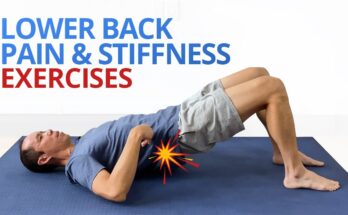Athlete’s Foot Treatment: Athlete’s foot, medically known as tinea pedis, is a common skin infection caused by fungi. This condition typically affects the feet, especially between the toes, and is characterized by itching, scaling, and sometimes blistering.
Understanding the diagnosis and treatment of athlete’s foot is crucial for effective management and prevention of recurrence.
What is Athlete’s Foot?
Athlete’s foot, known medically as tinea pedis, is a common fungal infection that primarily affects the feet. It’s characterized by itching, scaling, redness, and sometimes blistering and cracking of the skin, particularly between the toes and on the soles of the feet.
Detailed Definition of Athlete’s Foot
Athlete’s foot is caused by a group of fungi known as dermatophytes. These fungi thrive in warm, moist environments, making the feet a prime target, especially when they are confined in tight, sweaty shoes. The infection typically begins between the toes and can spread to other parts of the foot and even to other body parts if not treated promptly.
Causes and Risk Factors
Several factors can increase the risk of developing athlete’s foot. These include:
- Moist Environments: Walking barefoot in damp communal areas, such as swimming pools, gyms, and shower rooms, can increase the risk of contracting the fungus.
- Tight Footwear: Shoes that don’t allow your feet to breathe create a moist environment ideal for fungal growth.
- Sharing Personal Items: Sharing towels, socks, or shoes with someone who has athlete’s foot can spread the fungus.
- Sweaty Feet: Excessive sweating provides the moisture that fungi need to grow.
- Minor Skin or Nail Injuries: Cuts or abrasions on the feet can make it easier for the fungus to penetrate and establish an infection.
Preventing athlete’s foot involves keeping the feet dry, practicing good hygiene, and avoiding walking barefoot in public places. If you do develop athlete’s foot, over-the-counter antifungal creams are often effective, but severe cases may require prescription medication.
Remember, while athlete’s foot is not usually serious, it can be uncomfortable and persistent. If you suspect you have athlete’s foot and home remedies aren’t helping, it’s important to consult a healthcare professional for proper diagnosis and treatment.
Symptoms of Athlete’s Foot
Athlete’s foot, a common fungal infection, often manifests in several distinct symptoms. Knowing these signs is crucial for early detection and effective treatment.
Common Symptoms to Look Out For
- Itching, Stinging, and Burning: These are the most frequent complaints. The sensation typically intensifies between the toes or on the soles of the feet.
- Cracked and Peeling Skin: Especially around the toe areas, the skin may peel, crack, or flake as a result of the infection.
- Dry Skin: The skin on the soles or sides of the feet might appear unusually dry.
- Discolored and Thickened Toenails: Toenails may turn yellowish or brownish, and become thick and crumbly.
- Blisters: In some cases, blisters that itch can develop, leading to pain and inflammation.
- Redness and Rash: A red, scaly rash is common, and it can spread easily.
Differences Between Athlete’s Foot and Similar Foot Conditions
It’s essential to distinguish athlete’s foot from other foot conditions, such as eczema or psoriasis, which can exhibit similar symptoms.
- Location and Spread: Athlete’s foot often starts between the toes and may spread to the soles and edges of the foot, whereas other conditions like eczema might appear in different foot areas.
- Skin Texture: While athlete’s foot typically causes a scaly, dry skin texture, eczema might result in thicker, more leathery skin patches.
- Itchiness: The degree and nature of itchiness can differ. Athlete’s foot tends to cause a more intense, burning itch.
- Response to Antifungal Treatments: Athlete’s foot usually responds well to antifungal medications, which isn’t always the case with skin conditions like psoriasis.
Understanding these symptoms and differences is key in seeking timely and appropriate treatment. If you experience any of these signs, consulting a healthcare professional is advisable for an accurate diagnosis and effective management plan.
Diagnosing Athlete’s Foot
It’s essential for healthcare professionals to accurately diagnose this condition to provide effective treatment. Here’s a guide on how to diagnose athlete’s foot, focusing on the available diagnostic tests and procedures.
Diagnostic Tests and Procedures
- Physical Examination: The first step in diagnosing athlete’s foot is a thorough physical examination of the affected area. Healthcare professionals look for signs like redness, scaling, blisters, and peeling skin.
- Medical History Review: Understanding the patient’s lifestyle, activities, and any history of similar conditions helps in making a preliminary diagnosis.
- KOH Test (Potassium Hydroxide Preparation): A simple yet effective test involves scraping off a small area of infected skin and placing it in potassium hydroxide (KOH). This solution dissolves the skin cells but leaves the fungal cells untouched, making them visible under a microscope.
- Skin Culture: In some cases, a skin culture may be necessary. This involves taking a sample of skin and allowing any fungi present to grow in a lab setting. This test helps identify the specific fungus causing the infection.
- Wood’s Lamp Examination: Although not commonly used for athlete’s foot, this test involves shining a special light on the skin to detect certain types of fungal infections.
- Differential Diagnosis: It’s vital to distinguish athlete’s foot from other skin conditions like eczema or psoriasis, which require different treatment approaches.
Importance of Accurate Diagnosis
An accurate diagnosis is essential for effective treatment. Misdiagnosis can lead to unnecessary or ineffective treatments, prolonging discomfort and potentially leading to complications.
Diagnosing athlete’s foot involves a combination of physical examination, review of medical history, and specific diagnostic tests. By following these steps, healthcare professionals can ensure accurate diagnosis and effective treatment for their patients. Remember, early detection and treatment can prevent the spread of the infection and provide quick relief for the patient.
Conventional Treatments for Athlete’s Foot
Understanding the conventional treatment options available is crucial for effectively managing and eliminating this condition.
Overview of Standard Treatment Options
The cornerstone of treating athlete’s foot involves a combination of good foot hygiene and the use of antifungal medications. These treatments aim to alleviate symptoms and eradicate the infection. Here’s a brief overview:
- Topical Antifungals: These are the first line of defense against athlete’s foot. Available as creams, sprays, powders, and gels, they are applied directly to the affected area. Common active ingredients include clotrimazole, miconazole, and terbinafine. These treatments work by killing the fungus and preventing its growth.
- Oral Antifungals: In more severe cases, oral medications may be prescribed. These systemic treatments are more potent and can address infections that topical treatments can’t reach.
- Foot Hygiene: Keeping the feet dry and clean is crucial. This includes wearing breathable footwear, changing socks regularly, and avoiding walking barefoot in communal areas.
Prescription Medications vs. Over-the-Counter Options
When choosing between prescription medications and over-the-counter (OTC) options, it’s important to consider the severity of the infection:
- Over-the-Counter Options: For mild to moderate cases, OTC antifungals are often sufficient. These are readily available and can be used based on the instructions without a doctor’s prescription.
- Prescription Medications: For more persistent or severe infections, a healthcare professional may prescribe stronger antifungal medications. Prescription options might include higher doses of topical treatments or oral antifungal medications.
Remember, while OTC treatments are convenient, consulting a healthcare professional is advisable if symptoms persist or worsen. They can provide a tailored treatment plan, considering your specific condition and health history.
However, the effective management of athlete’s foot involves a blend of proper foot care and the appropriate use of antifungal treatments. Whether you opt for OTC remedies or seek prescription medications, the key is consistent application and maintaining good foot hygiene.
Home Remedies and Lifestyle Changes for Athlete’s Foot
Dealing with athlete’s foot can be frustrating, but there are effective home remedies and lifestyle changes that can help treat and prevent its recurrence. This guide offers practical and easy-to-follow advice, suitable for anyone struggling with this common fungal infection.
Effective Home Remedies for Athlete’s Foot Treatment
- Tea Tree Oil: Known for its antifungal properties, tea tree oil can be applied directly to the affected area. Dilute it with a carrier oil to avoid skin irritation.
- Garlic: A natural antifungal agent, garlic can be crushed and applied to the feet. For a less direct approach, including garlic in your diet can also be beneficial.
- Apple Cider Vinegar Soaks: Mix one part vinegar with three parts water and soak your feet. The acidic environment helps curb fungal growth.
- Baking Soda Paste: Create a paste with baking soda and water and apply it to your feet. Besides its antifungal properties, baking soda helps absorb moisture.
- Plain Yogurt: The live acidophilus bacteria in plain yogurt is effective against fungi. Apply it directly to the infected area and let it dry before washing off.
Preventative Lifestyle Changes to Avoid Recurrence
- Keep Feet Dry and Clean: Fungi thrive in moist environments. Ensure your feet are thoroughly dried after washing, especially between the toes.
- Breathable Footwear: Choose shoes made of materials that allow your feet to breathe, reducing moisture buildup.
- Avoid Barefoot in Public Areas: Places like public showers, pools, and locker rooms are hotspots for fungal infections. Wear flip-flops or protective footwear.
- Change Socks Regularly: If your feet tend to sweat, change into fresh socks to keep them dry.
- Strengthen Immune System: A strong immune system can fight off fungal infections more effectively. Maintain a healthy diet, get enough sleep, and exercise regularly.
Implementing these home remedies and lifestyle changes can significantly reduce the symptoms of athlete’s foot and prevent future occurrences. Remember, consistency is key, and if symptoms persist, consulting a healthcare professional is advised.
When to See a Doctor for Athlete’s Foot
Experiencing discomfort or signs of an infection in your feet can be worrisome. Recognizing when it’s time to see a doctor for Athlete’s foot is crucial for your health and well-being. This section will guide you through the key indicators that suggest a medical consultation is necessary and discuss the potential complications that can arise without proper treatment of Athlete’s foot.
Indicators That Medical Consultation is Needed
- Persistent Symptoms: If you have been treating Athlete’s foot at home with over-the-counter remedies for more than two weeks without any improvement, it’s time to consult a doctor.
- Severe Symptoms: Look out for severe symptoms such as excessive redness, swelling, drainage, or fever. These are signs that the infection may be more serious and require professional medical attention.
- Recurring Infections: Frequent recurrences of Athlete’s foot, even after treatment, should be evaluated by a healthcare professional. This could indicate an underlying condition that needs to be addressed.
- Diabetes or a Weakened Immune System: Individuals with diabetes or weakened immune systems should consult a doctor immediately upon noticing any symptoms of Athlete’s foot. They are at higher risk of severe complications.
Potential Complications Without Proper Treatment of Athlete’s Foot
Ignoring Athlete’s foot or delaying treatment can lead to several complications:
- Secondary Bacterial Infection: The cracked skin and blisters of Athlete’s foot can become infected with bacteria, potentially leading to cellulitis, a serious condition that requires antibiotic treatment.
- Spread of Infection: The fungus can spread to other parts of the body, like the hands, nails, and groin, leading to further discomfort and complications.
- Allergic Reaction: Some individuals may develop an allergic reaction to the fungus, causing blistering on the hands or feet.
- Foot Ulcers: In severe cases, especially in individuals with diabetes, Athlete’s foot can lead to chronic ulcers, which are difficult to heal and may have serious consequences.
It’s important to be vigilant about foot health. If you notice any of the mentioned symptoms or if your condition worsens, don’t hesitate to seek medical advice. Early intervention can prevent complications and lead to a quicker recovery.
Latest Advances in Athlete’s Foot Treatment
Recent developments have brought forth new medications and treatments, offering relief to sufferers. These innovations range from improved topical antifungals to oral medications, ensuring a broader and more effective approach in tackling this persistent condition.
Topical Solutions
The latest topical treatments for athlete’s foot are more efficient in combating the fungus. These include creams and sprays that contain enhanced antifungal agents, ensuring quicker relief from symptoms and reducing the risk of recurrence. Their advanced formulations are designed to penetrate deeper into the skin, targeting the fungus more effectively.
Oral Medications
Oral antifungal medications have also seen a notable upgrade. These systemic treatments work from within to eliminate the fungus, providing a comprehensive solution for severe cases. The newer oral medications boast fewer side effects and a shorter treatment duration, making them a more convenient option for patients.
Emerging Research and Future Prospects
The future of athlete’s foot treatment looks promising, with emerging research focusing on even more effective and patient-friendly solutions. This research includes:
Novel Antifungal Agents
Scientists are exploring new antifungal agents that could offer more potent and targeted treatment options. These agents are expected to be more effective against resistant strains of the fungus, a growing concern in the medical community.
Vaccine Development
The prospect of a vaccine for athlete’s foot is an exciting development. While still in the early stages of research, a vaccine could provide long-term immunity against the fungus, revolutionizing how we approach prevention and treatment.
Natural and Alternative Remedies
There’s also growing interest in natural and alternative remedies for athlete’s foot. These include plant-based treatments and probiotics, which could offer a more holistic approach to managing the infection.
FAQs: Understanding Athlete’s Foot and Its Treatment
1. What is Athlete’s Foot?
Athlete’s foot, also known as tinea pedis, is a common fungal infection that affects the skin on the feet. It is typically characterized by itching, scaling, and redness. This condition is called “athlete’s foot” because it’s commonly seen in athletes, but it can affect anyone.
2. How is Athlete’s Foot Contracted?
Athlete’s foot is highly contagious and can be contracted by coming into direct contact with an infected person or by touching surfaces contaminated with the fungus. This includes floors, shoes, and towels, especially in warm, damp environments like showers, gyms, and pool areas.
3. What are the Symptoms of Athlete’s Foot?
Common symptoms include itching, stinging, and burning between the toes or on the soles of the feet; red, scaly, flaky, or cracked skin; blisters or ulcers; and dry skin on the sides or bottoms of the feet.
4. Can Athlete’s Foot Spread to Other Parts of the Body?
Yes, the fungus causing athlete’s foot can spread to other parts of the body, such as the hands, nails, and groin, often through scratching or touching the infected area.
5. How Can I Prevent Athlete’s Foot?
Preventative measures include keeping your feet dry and clean, wearing moisture-wicking socks, using antifungal powders, avoiding walking barefoot in public areas, and not sharing shoes or socks with others.
6. What are the Treatment Options for Athlete’s Foot?
Treatment usually involves over-the-counter antifungal creams, sprays, or powders. For more severe cases, a doctor may prescribe oral antifungals or stronger topical treatments.
7. How Long Does It Take to Treat Athlete’s Foot?
The duration of treatment can vary depending on the severity of the infection. Over-the-counter treatments typically require 1-2 weeks, while prescription medications may take longer.
8. Can Athlete’s Foot Reoccur?
Yes, athlete’s foot can reoccur, especially if preventive measures are not consistently followed. Regular foot hygiene and avoiding exposure to the fungus are key to preventing recurrence.
9. Should I See a Doctor for Athlete’s Foot?
If over-the-counter treatments do not improve symptoms within two weeks, or if the infection is severe, it’s advisable to see a healthcare professional for assessment and treatment.
10. Can Home Remedies Be Effective Against Athlete’s Foot?
While some home remedies may offer temporary relief, they are not typically recommended as a primary treatment. It’s best to use clinically proven antifungal treatments for effective results.
Conclusion
We strongly encourage those suffering from symptoms of athlete’s foot to seek professional help. A healthcare provider can offer tailored treatment plans and advice, ensuring a quick and effective resolution. Ignoring symptoms can lead to complications, including secondary bacterial infections, which are more challenging to treat.
In conclusion, being proactive in recognizing the signs of athlete’s foot and seeking appropriate treatment is vital. Not only does it ensure your personal comfort and health, but it also contributes to the overall well-being of those around you, as this infection can easily spread in communal environments. Take the necessary steps today to keep your feet healthy and infection-free.



